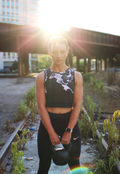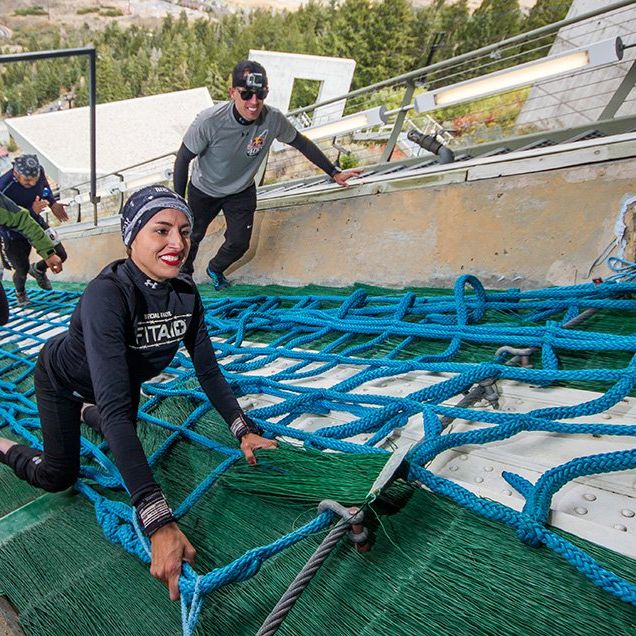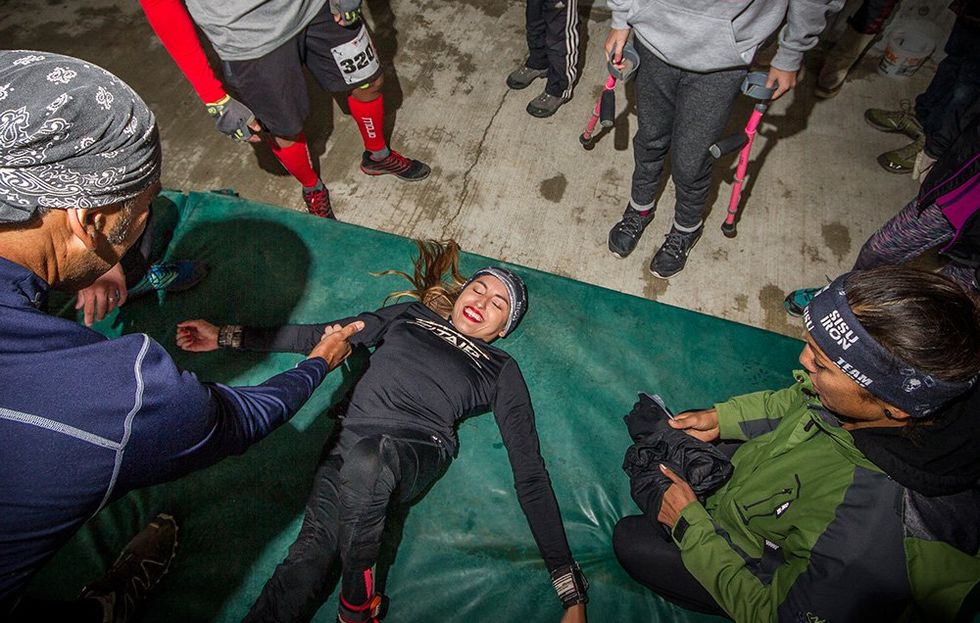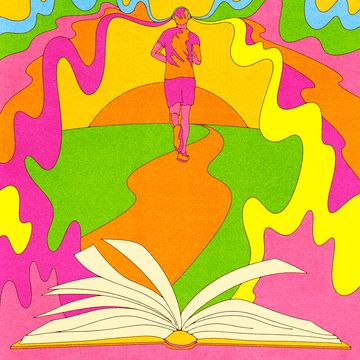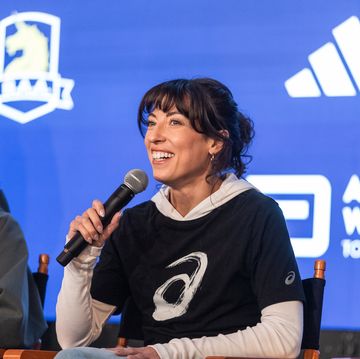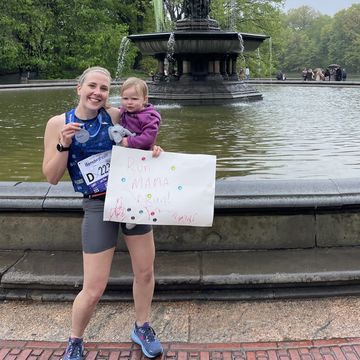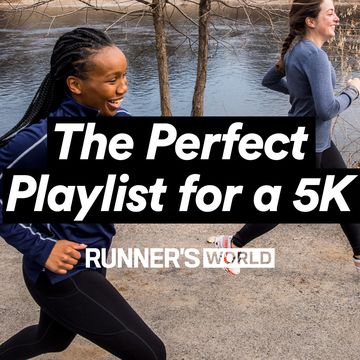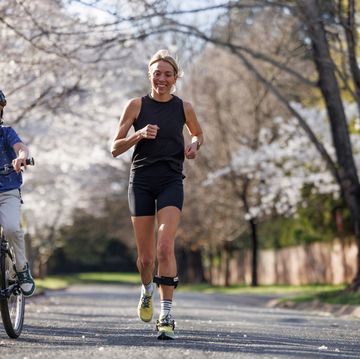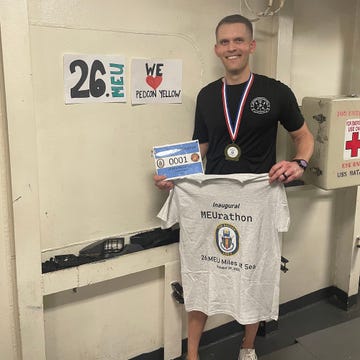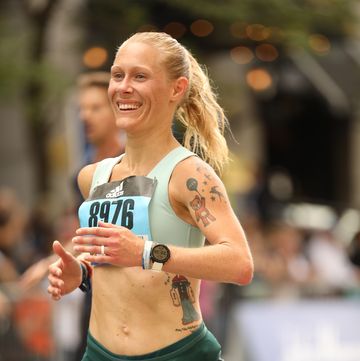At 4 feet 4 inches tall and 89 pounds, I’m unlike most other runners. My legs are thinner than most, weaker than most.
So, as soon as I saw a video of the Red Bull 400, an annual 400-meter racing circuit with its last stop cruising up Park City, Utah’s K120 ski jump slope—the one used in the 2002 Winter Olympics—I knew that making it to the top would require a healthy dose of creativity.
As an athlete with myelomeningocele, the most serious form of spina bifida (a birth defect where the backbone and spinal canal do not fuse before birth), I’m used to doing things my own way. For instance, since my legs have limited strength and mobility, my car is outfitted with hand controls. To hit the gas, I push down on a small bar near the driver-side door. If I push up, that’s the break. Some people refer to that as “overcoming obstacles.” But, for me, that’s all I’ve ever known.
And as far as I’m concerned, my real obstacle was restarting my life in 2012 at the age of 26. I was battling an addiction to the morphine that doctors said would help ease my pain, and I found myself unemployed, broke, divorced, and living out of my car.
Then, when one day I literally saw a sign. It was an ad for a local 5K. Right then, I started walking. At first, it was one block per day. Then two, and three. That year, I ran my first 5K—I actually assumed it was five miles—and threw out my pills. (For the record, I don’t recommend doing this without a doctor’s supervision.)
Since that first race, I’ve completed other 5Ks, 10Ks, half marathons, and Spartan Races. My race times vary widely, and I’m no stranger to being the very last participant to finish the race. On more than one occasion, by the time I crossed the finish line, there was no actual finish line. The banner had been taken down and everyone had gone home.
All of these races involve thinking outside of the box. Case in point: During Spartans, I can’t carry sandbags with my hands (I have to keep a good grip on my crutches), so I fit them between my back and CamelBak—in the dip created by my wonky L5 spinal segment.
My strategy for the Red Bull 400: pure upper body strength. So, for the first time in my life, I began rowing. I learned that I could place my feet near the stirrups where my feet were “supposed” to go (I didn’t actually use them), and row away. I didn’t have to put my legs into it. I added sled pulls into my routine and cranked up the intensity on my rope climbing.
Instead of taking a breather after I made it back to the bottom on a rope climb, I would climb up, down, and back up again without letting my feet touch the floor. Or, once I got to the top, I’d crank out a set of pullups or chinups. I would train when I was exhausted so I could adjust my body to being tired, but pushing past that.
After four months of training, I felt pretty confident. On the morning of the race, while waiting for the adaptive athlete heat to start (I was the only registrant) I watched grown-ass men being pulled off of the racecourse with oxygen masks strapped to their faces. I watched it take people anywhere from a little over four minutes to nearly 40 minutes to finish the race, with crazy-strong and fit athletes like former Crossfit Games winner Camille Leblanc-Bazinet crossing the finish line in 6:48.0.
I got nervous. Really nervous. Would I be able to finish the race in the hour that Red Bull had allotted me? Would I be able to finish at all? To that point, I had never quit a race. Today couldn’t be the first.
Finally, it was time for me to make it up that netting-covered ski jump. I ran as far as I could on my crutches, then, once things got too steep and gravity started to take over, I gave my crutches to my Sherpa, dropped to my hands and knees, and began pulling.
I can confidently say that the pain I felt was unlike any I had ever experienced before—and that is despite having 28 surgeries in the past. It hit me square in my lungs, and crept up my throat. After all, I live and train in Los Angeles, not at Park City’s nearly 7,000 feet of elevation. The taste of iron filled my mouth, but I stayed focused on each pull.
Left, right, left, right. At some spots, the incline hits 38 degrees of willpower-sucking vert. In just 400 meters, the race packed in 430 feet of elevation gain.
When I looked up, I saw several other people bear-crawling up the course next to me, cheering me on. Included in the crowd were regular race participants who had already completed the race once, as well as a member of a board of directors for a local adaptive clinic. I also knew that hundreds of “my kids”—children I work with who have spina bifida—were watching via Facebook Live. Since I started several years ago, racing has allowed me to become a motivational speaker. While I train and race, I also speak in schools and mentor many children with spina bifida and their families in person or online.
They were my “why,” and I stayed focused on them. I was set on showing them, and everyone else watching, exactly what a person with spina bifida can do.
I crossed the finish line in 32:26.7. I had crushed what I had deemed to be my fitness goal for 2016, and it felt amazing—mentally, not physically. The view from the top was unmatched.
As for my 2017 goals, I want to build on what I’ve already accomplished. Since I have a bunch of “my kids” in the Great White North, I want to compete in Canada’s Red Bull 400 that takes place in Whistler, British Columbia. Then, I want to improve my time in Park City, and while competing in a regular coed heat, rather than in a separate adaptive athlete heat. (Hey, if I had in 2016, I actually wouldn’t have come in last place!)
But this race isn’t against anyone else. It’s against that voice in all of our heads that tell us we can’t do something. It’s about finding a way—even when that means pulling your way up an Olympic ski jump.
